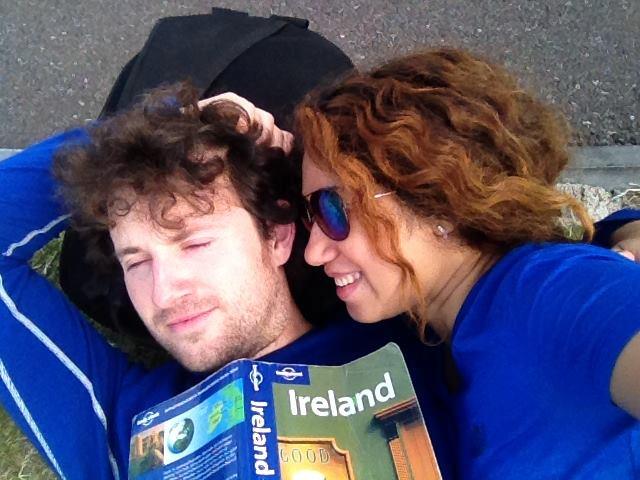How butterflies are helping to mitigate poverty in Cambodia
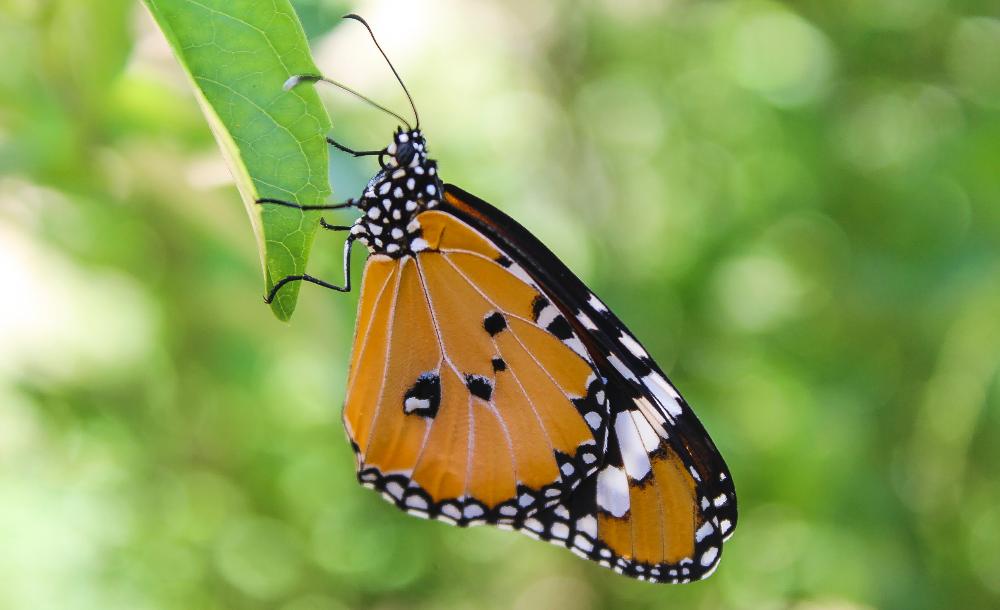
‘’The butterfly counts not months but moments, and has time enough’’ – Rabindranath Tagore
Cambodia is a country of rich biodiversity, boasting several hundred species of butterflies and thousands of species of moths. The Cambodian people have not overlooked this lucrative natural resource and have found a way to use it to help mitigate poverty in remote rural districts.
Butterfly farming has become an important source of supplementary income for many rural folks in Cambodia and they work in partnership with butterfly exhibition centres.
How butterfly farming in Cambodia works is that the farmers initially get a hold of some butterflies, either by capturing them from the field or from a local supplier. They have the butterflies lay their eggs on a suitable host plant inside a breeding cage. The eggs soon hatch into larvae, which the farmers will protect and ensure they receive a good supply of fresh leaves.
The leaves must be those of a very specific host plant as the larvae are extremely picky about what they will eat, preferring to starve rather than eat the wrong plant.
Once the larvae have grown big enough, they’ll turn into hardened pupae and at this stage, can even be sent in the mail. The farmers then supply some of the pupae to various butterfly exhibition centres.

These butterfly exhibition centres have been popping up all over Cambodia in recent years, from the Banteay Srey Butterfly centre and Butterflies Garden Restaurant in Siem Reap province, to the Kep Butterfly Farm on the south coast. Even the capital’s Dreamland Amusement Park hosts a small insect house amidst its roller coasters.
A mutually beneficial relationship seems to exist between local farmers and the exhibition centres that the farmers supply. The centres provide training in butterfly raising techniques to local farmers, who then go on to provide the centre with a regular supply of beautiful moth and butterfly pupae.
The butterfly centres play several roles, acting as a tourist attraction and also playing an important role in educating people about the important role of butterflies in the ecosystem. Some centres charge entrance fees and treat it as a business while others are free to enter and the owners just consider it a hobby and enjoy showing people their exhibits. Many of the centres also act as suppliers of butterflies and moths, mostly satisfying local demand, but in the near future, many will be licensed to export butterflies internationally, to supply foreign zoos and other exhibitors.
The centres are not only helping to mitigate poverty amongst poor farming communities but are doing so in a way that doesn’t cause any major destruction to the natural environment. Butterfly farming helps to reduce poaching of rare and endangered species by offering an alternative form of income to very poor rural families.
While travelling in Cambodia we had the wonderful opportunity to visit the Banteay Srey butterfly centre, which claims the largest butterfly exhibition in Southeast Asia.
The centre is located about 3 km from the well known landmine museum and about 25km North of Siem Reap. We travelled there by tuk-tuk, paid the small entrance fee and entered into a large netted enclosure, with winding paths leading through beautiful gardens full of vibrant green plants and colourful flowers.
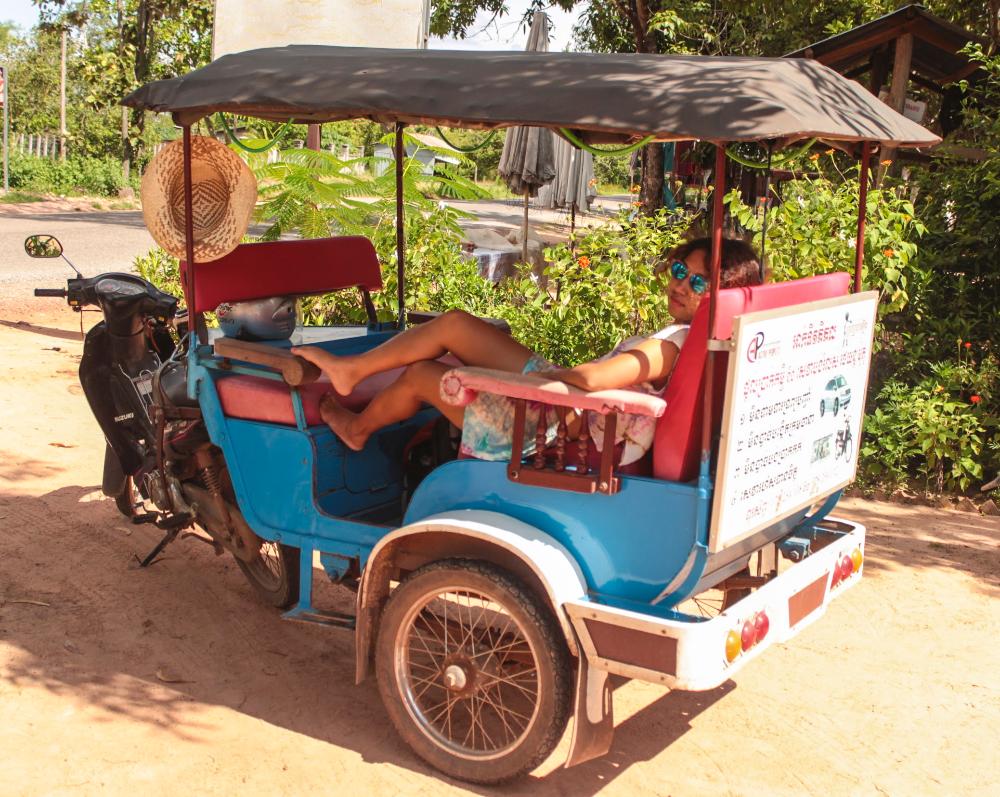

We wandered around the enclosure for over an hour through the maze of pathways, taking note of all of the different varieties of butterflies we were witnessing and wondering if their names were as beautiful as their wings. Many of the butterflies were restless and kept fluttering about, refusing to pose for a photograph. Others remained very still and allowed us to approach very closely with the camera, allowing ample time to take a perfect photograph.
A staff member showed us around a little and he showed us a very impressive and varied collection of pupae and some interesting looking caterpillars that were being raised in a controlled environment.
The pupa stage typically lasts for a few weeks although in some species it can last for several months or even several years. The moment when the pupa finally splits open and the newborn butterfly finally emerges is a magical one. We weren't lucky enough to witness it unfortunately.

Your content goes here...
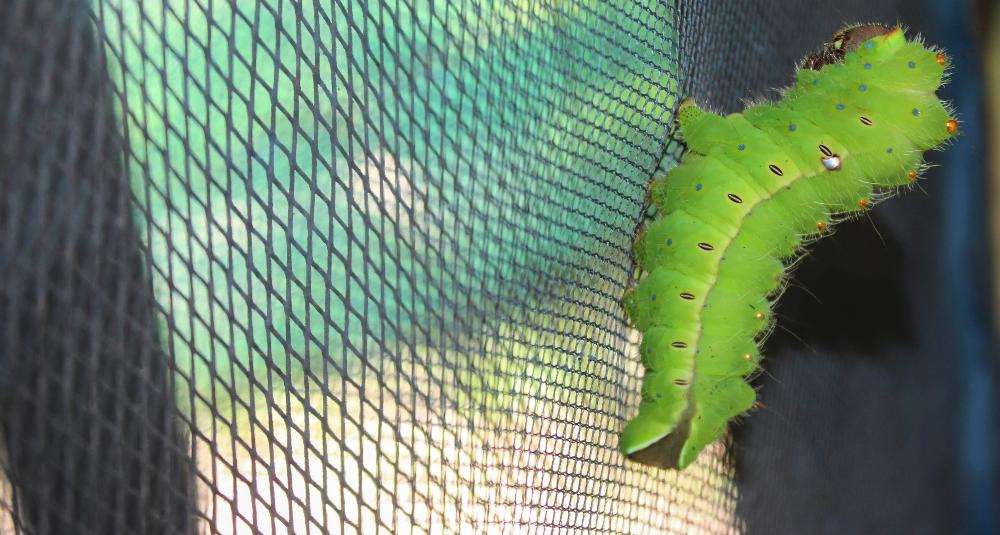
The centre keeps over 35 moth and butterfly species but we were only able to spot perhaps half of those on the day we visited. During the rainy season, there tends to be only 12-15 species flying around the centre but that number increases to over 30 species in November and December when the weather is more favourable. There was a very useful chart at the centre which helped us to identify all of the species that we found and photographed that day.
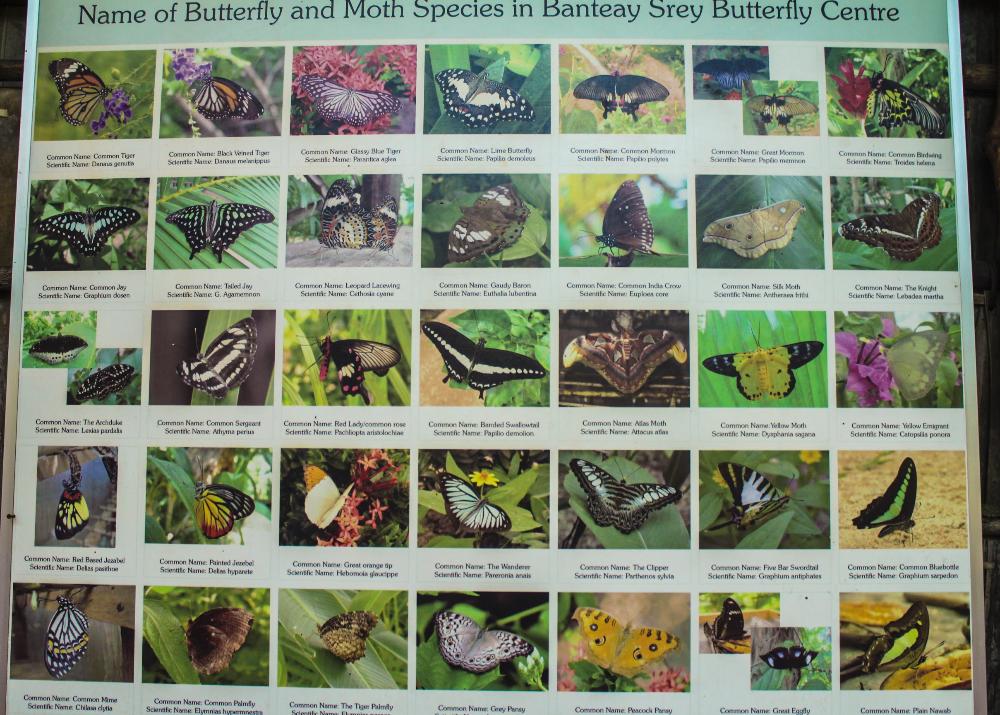
We came across many species as we explored all of the nooks and crannies of the enclosure, including plain tigers, common tigers, tailed jays, common birdwings, common crows, yellow moths, leopard lacewings, common mimes, common limes, great mormons, common mormons and a few others.
Have a look through the following photographs and you’ll see the beautiful and varied butterflies that we were able to photograph at the centre that day.

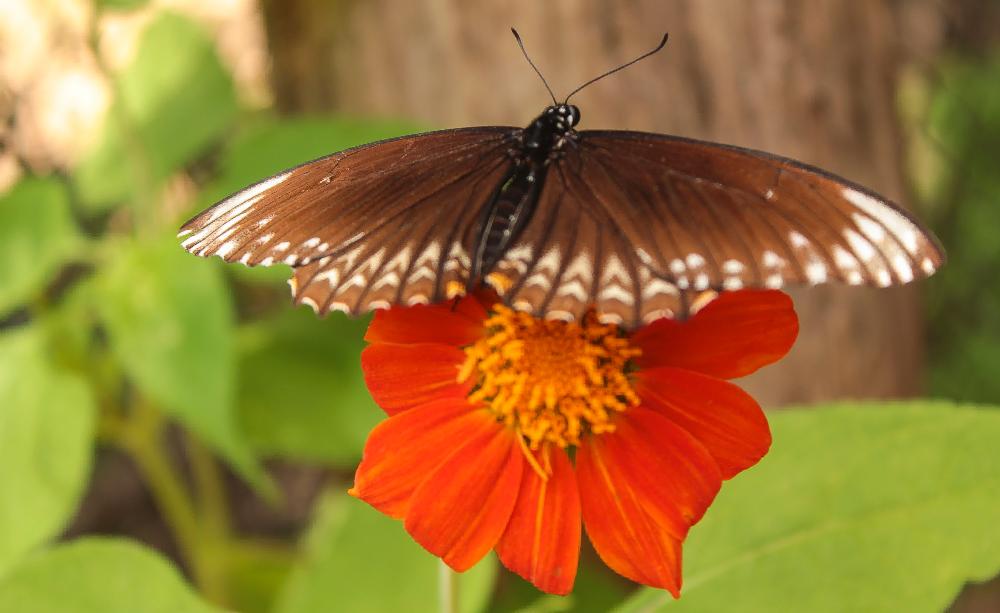
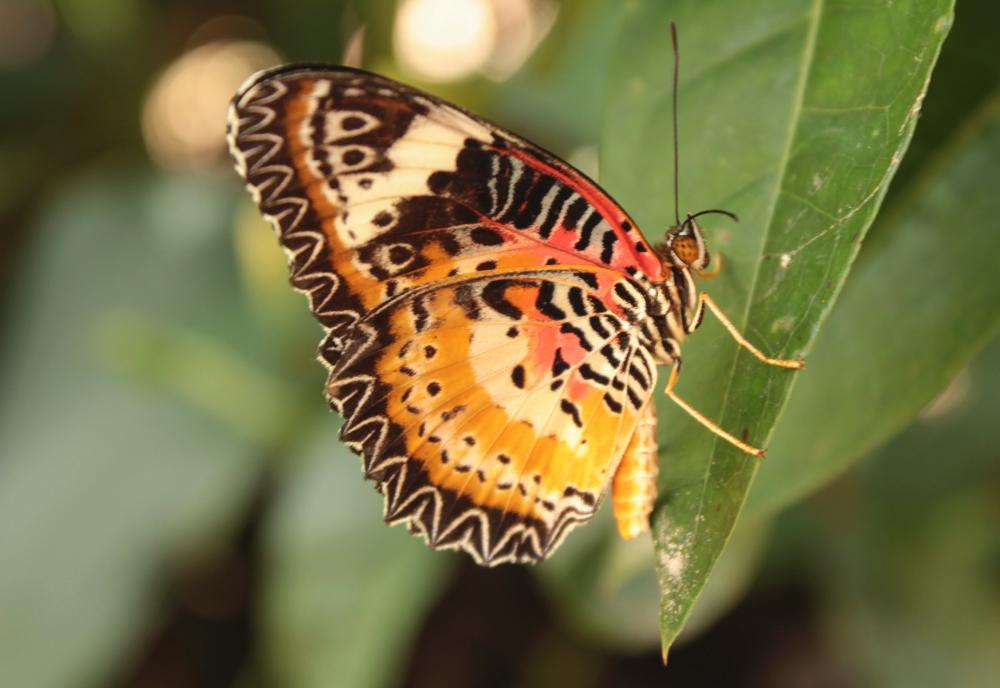

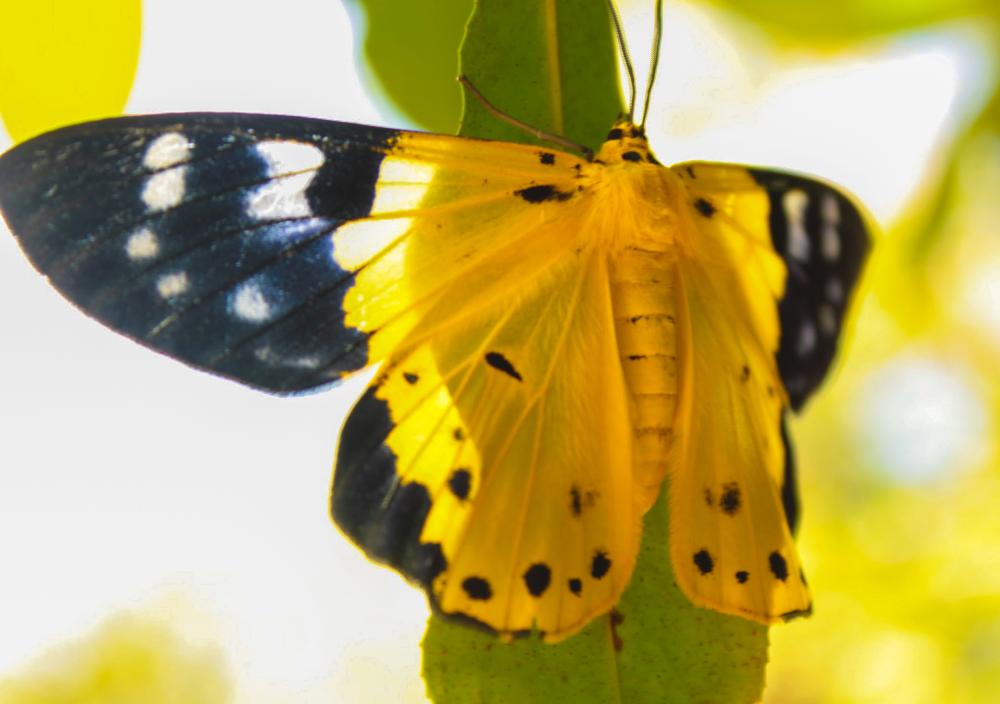
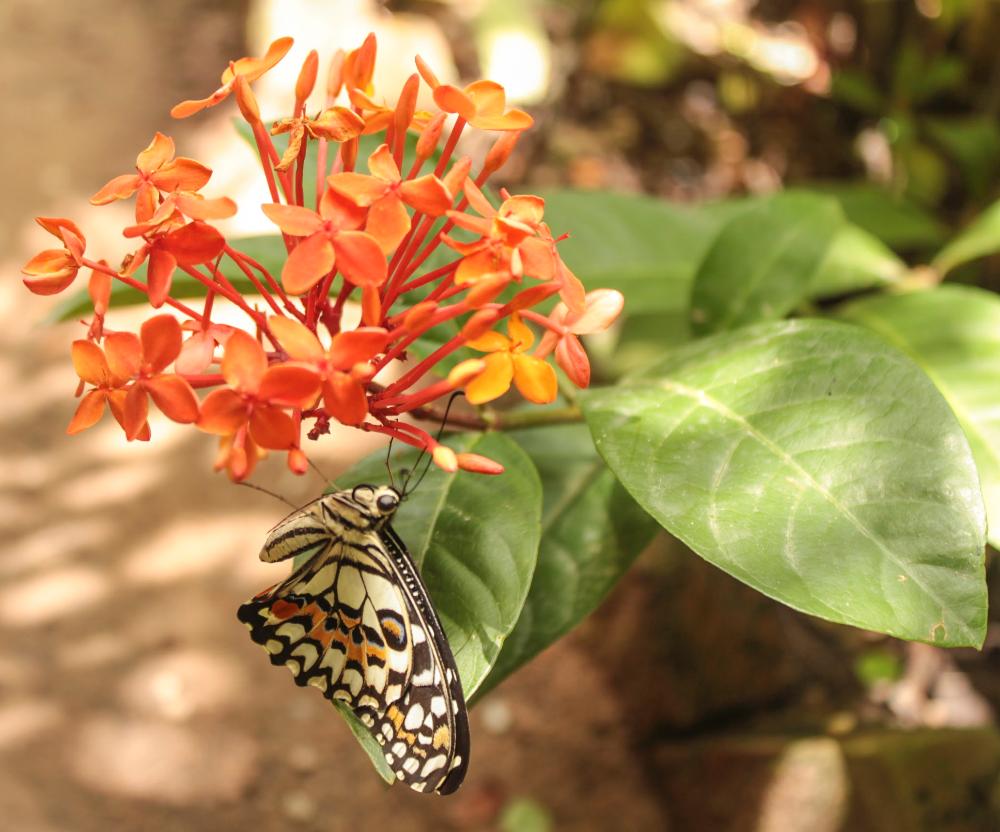
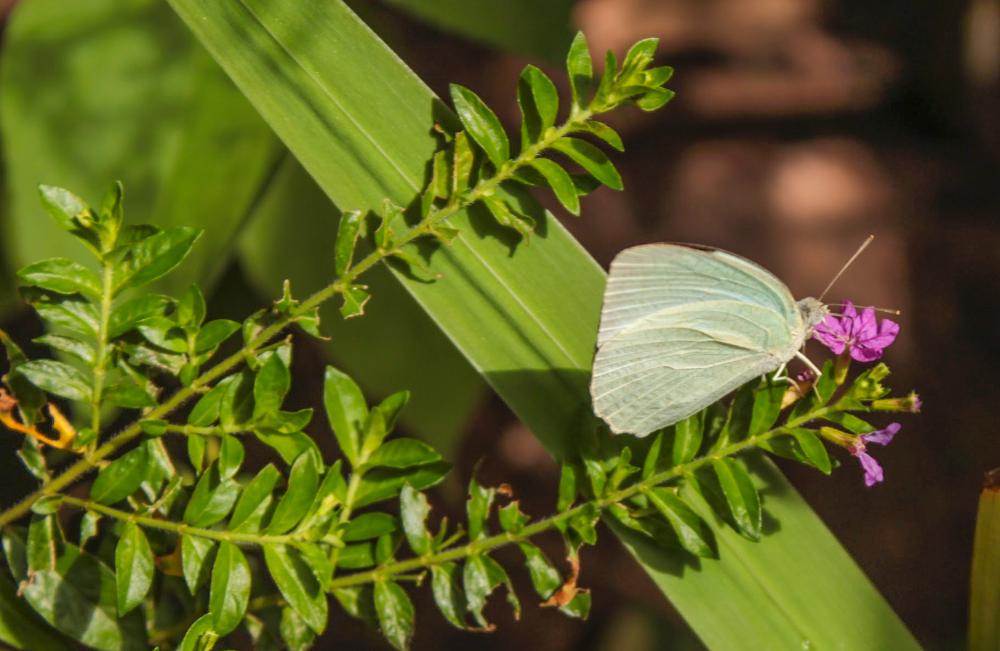
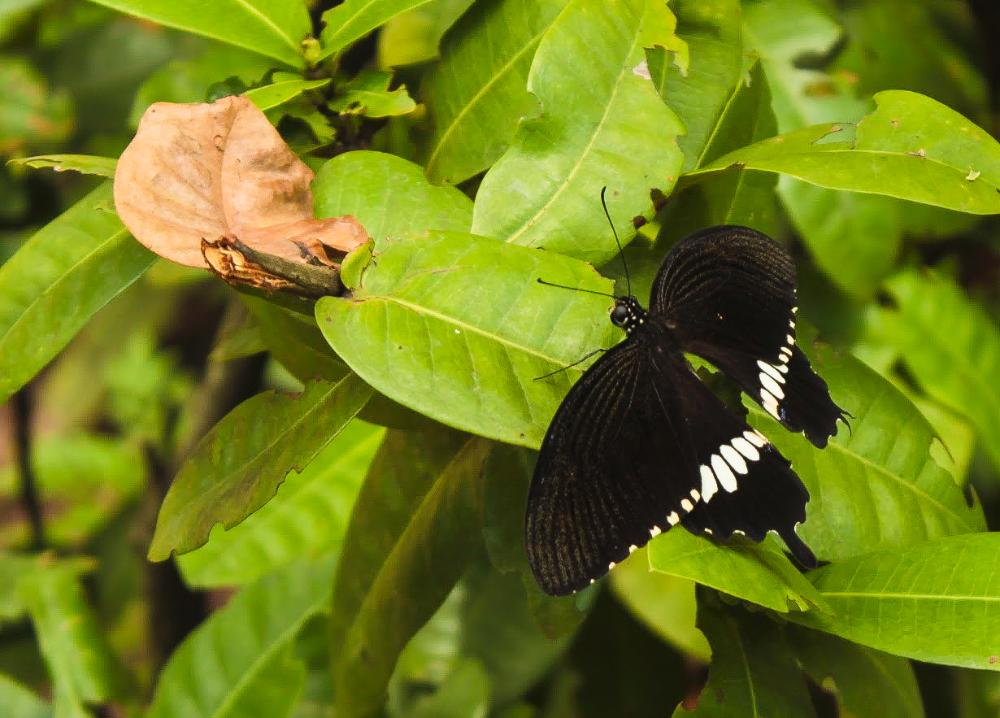
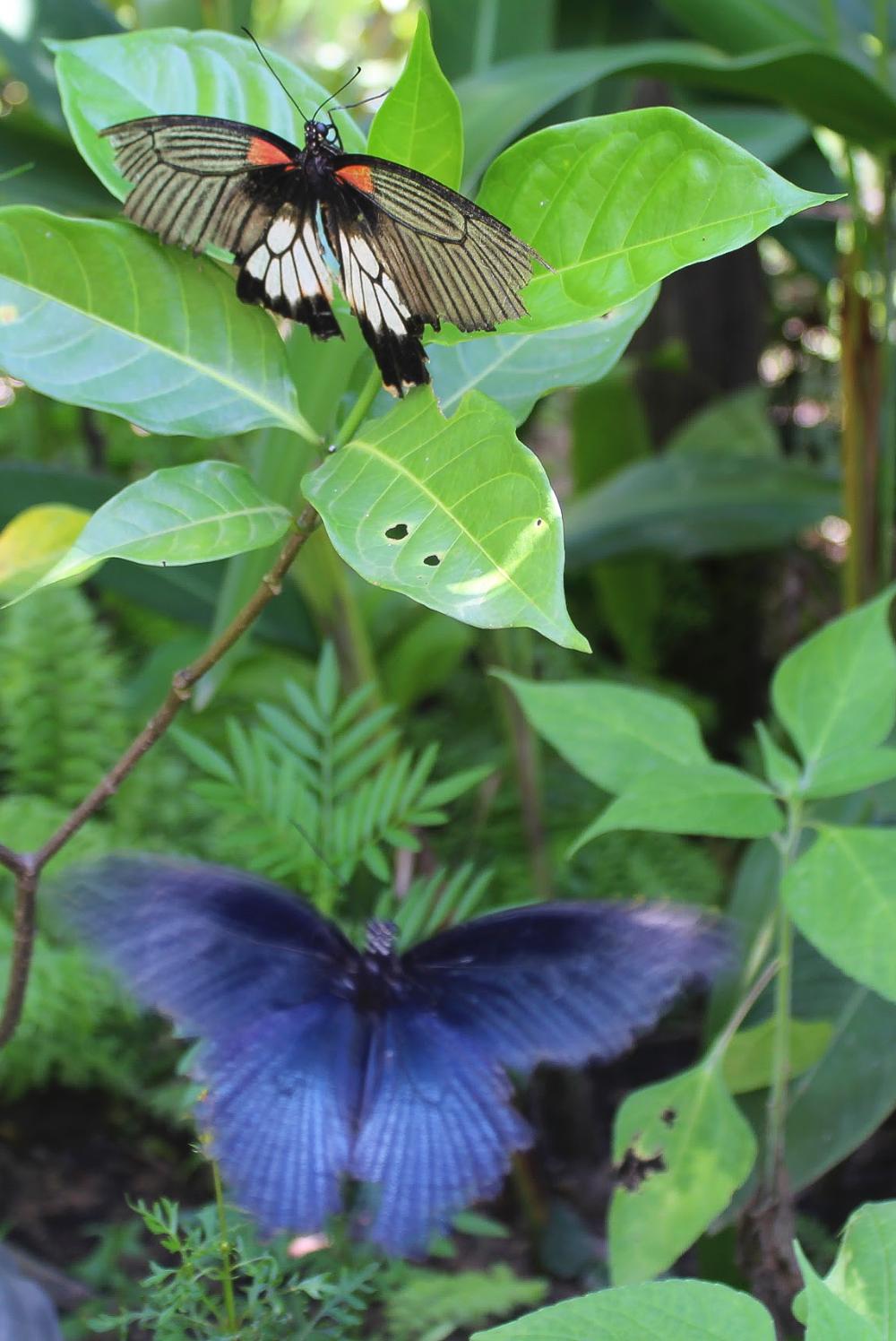
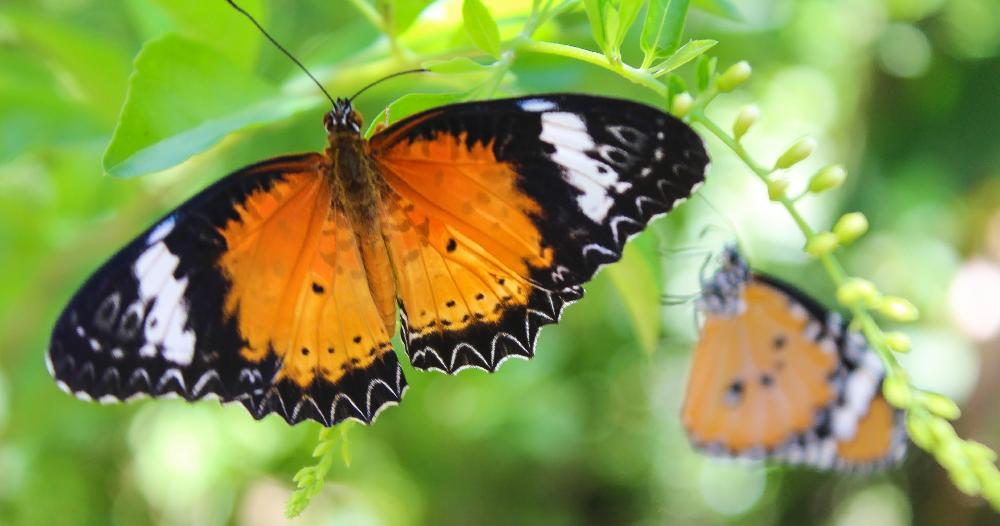

While exploring around Siem Reap we also stumbled across the Butterfly Garden restaurant. We didn't eat have any plans to eat there, being mainly interested in seeing the butterflies.
The butterflies here were kept inside a netted enclosure that was separated from the main restaurant. We noticed to our dismay that many of the butterflies inside the enclosure were dead. Perhaps there weren't enough flowers with enough nectar for them to drink or maybe there was another reason. We gathered up a few of the dead ones and made a little display to photograph.
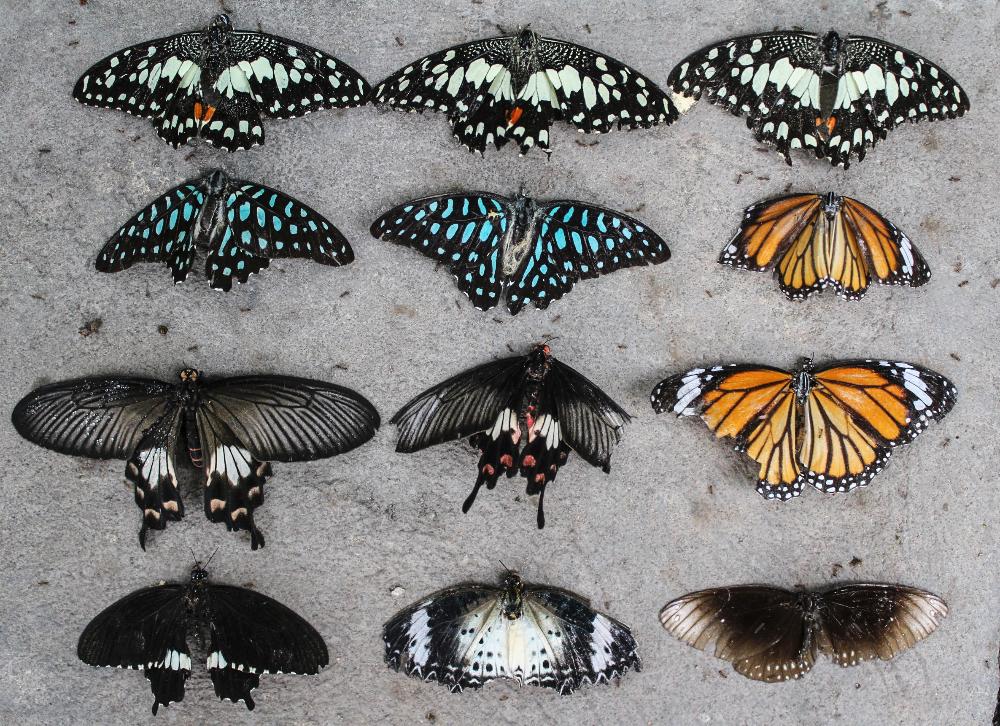
Final thoughts
Butterfly farming is definitely helping poorer Cambodian communities to make ends meet. It's helping to provide an alternative to the poaching of endangered wildlife for farmers and other rural people who are desperately in need of extra income. That said, we're not really sure it sits entirely well with us.
We have some concerns about sustainability and wonder whether farmers have to continually source butterflies from the fields and jungles in order to meet the demands of the butterfly centres. Perhaps this is not a genuine concern and the farmers hatch a few of the pupae themselves and use these butterflies to lay the eggs for the next batch of larvae.
Butterflies also are a symbol of freedom. While their beauty is certainly not lost inside the enclosures, their freedom certainly is and there's something a little sad about the whole affair. It's reminiscent of the bird in a cage concept; beautiful creatures with heavenly singing voices and colourful plumage being used to brighten up drab and lifeless human abodes.
Seeing those dead butterflies at the butterfly garden restaurant also gave us a bad feeling about the whole thing. We've never seen a mass butterfly funeral like that during our forays into nature and wild places.
JOIN OUR LIST
SUPPORT US
FOLLOW US
ABOUT US
Our names are Eoghan and Jili and we hail from Ireland and India respectively.
We are two ardent shoestring budget adventure travellers and have been travelling throughout Asia continuously for the past few years.
Having accrued such a wealth of stories and knowledge from our extraordinary and transformative journey, our mission is now to share everything we've experienced and all of the lessons we've learned with our readers.
Do make sure to subscribe above in order to receive our free e-mail updates and exclusive travel tips & hints. If you would like to learn more about our story, philosophy and mission, please visit our about page.
Never stop travelling!
FOLLOW US ON FACEBOOK
FOLLOW US ON PINTEREST
-lw-scaled.png.png)

